We motored slowly along the edge of the island, looking for a suitable landing place. There was no dock, and the bluff along the North Santee River was steep in places and thickly grown over. We considered fallen trees as possibilities, but looking further a tiny beach seemed the best option. I stepped off the bow into shallow water, my hiking shoes hanging from my pack, and armed with a trekking pole and my camera. I waved goodbye until the appointed pickup time later.
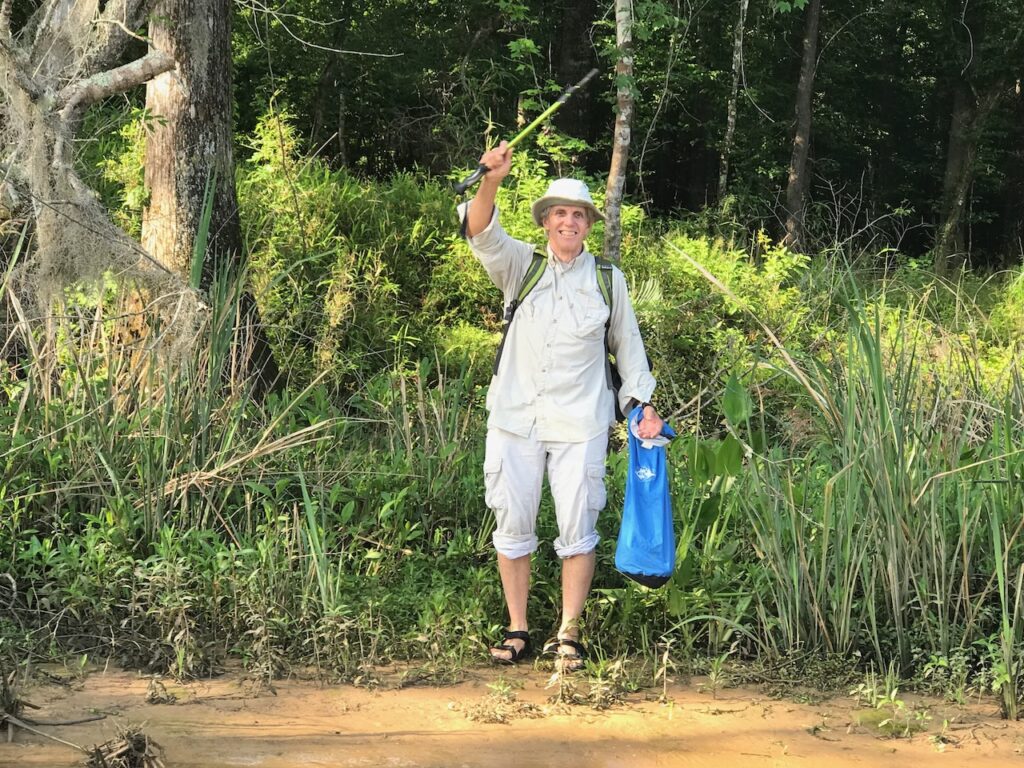
What island had I been dropped off on? This island covering about 2000 acres, and located at the head of The Santee Delta, was on the market for sale in 2021. In the last year this tract of land, along with two others further up the Santee River, were acquired by the Open Space Institute (OSI) and the Nature Conservancy (TNC) as part of the Santee River Wilderness Corridor. The name used on the map produced by OSI and TNC was Santee Island, though this island has been known as Commander (or Commander’s) Island. Part of the confusion about this name stemmed from a creek cutting through the island to create a smaller isle, therefore Big Commander and Little Commander Islands. Most maps of the area did not include a name on the larger island, though Fork Island was one name listed on historic maps.
How did I arrive at this island? After hearing about the island acquisition, I contacted both OSI and TNC, requesting permission to see it in person. I was then contacted by a TNC employee, Matt Williams, who offered to take me there. (Many thanks to Matt.) In preparation, I searched all maps for any details, and even Google Earth, though few island features were evident. I printed up one map, used in the earlier marketing of the island.
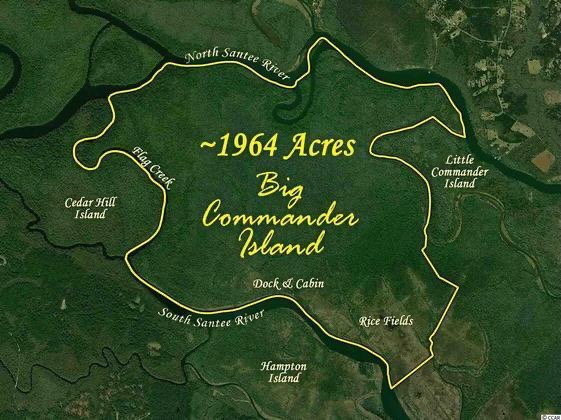
Even if I had had it, the USGS topographical quadrant from 1943 (screenshot) would have provided little other information besides rice fields on the southern side (shown on the other map), which I would not get near. Note the lack of a name on this island, despite smaller ones (Cedar and Goat) clearly named.
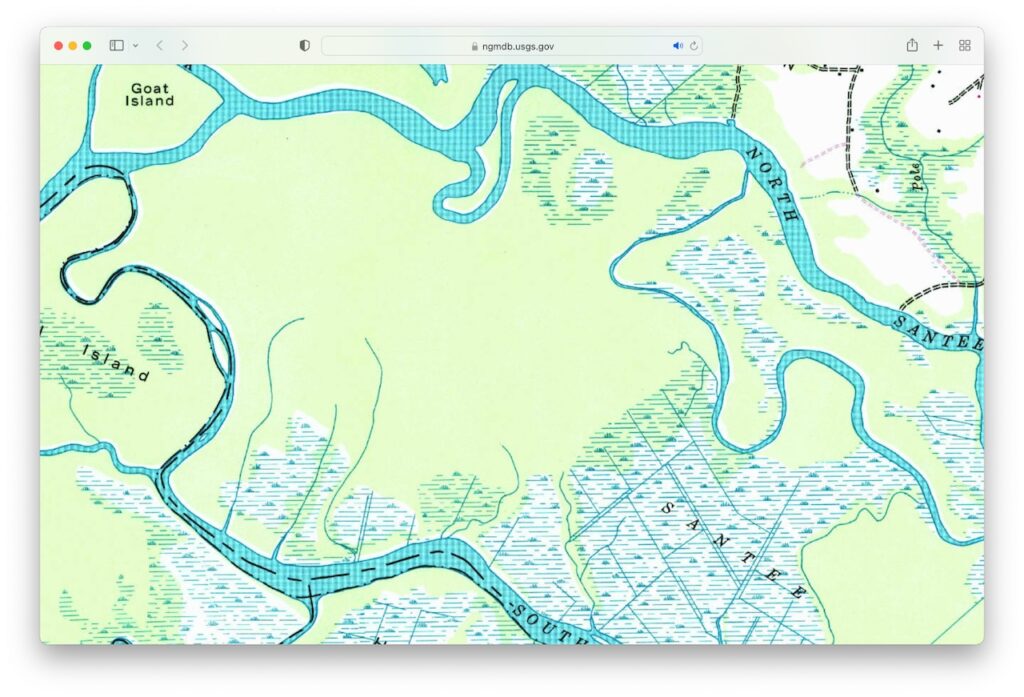
No need to worry, I did not hike around on the island in sandals, no socks, and my pants rolled up. In fact I did not hike at all, but just walked carefully, often in thick underbrush. There were no trails, only some indication of wildlife paths, and I followed those places that existed. Matt had also stated twice that snakes were out and about, but I was more than aware with a couple of close encounters this spring. I was actually more concerned with biting insects, and had packed protective gear. Most fortunately, the mosquito count was quite low, and I did not sense a biting fly throughout my time on the island.
That being said, it was a wild place, though some human signs were evident. After I ascended the incline to the top of the bluff, there were a number of small Chinese tallow trees (popcorn trees), a most invasive plant unwisely brought into the U.S. There was a remnant section of fencing, including barbed wire implanted into a tree that had grown around it. There was another sight around the bend in the island that was bizarre. A number of carcasses of garfish appeared near the edge of the North Santee River. Several people later speculated the cause for this littering of fish. My best hunch was a fish kill, probably a bycatch of the shad fishery using gill nets.
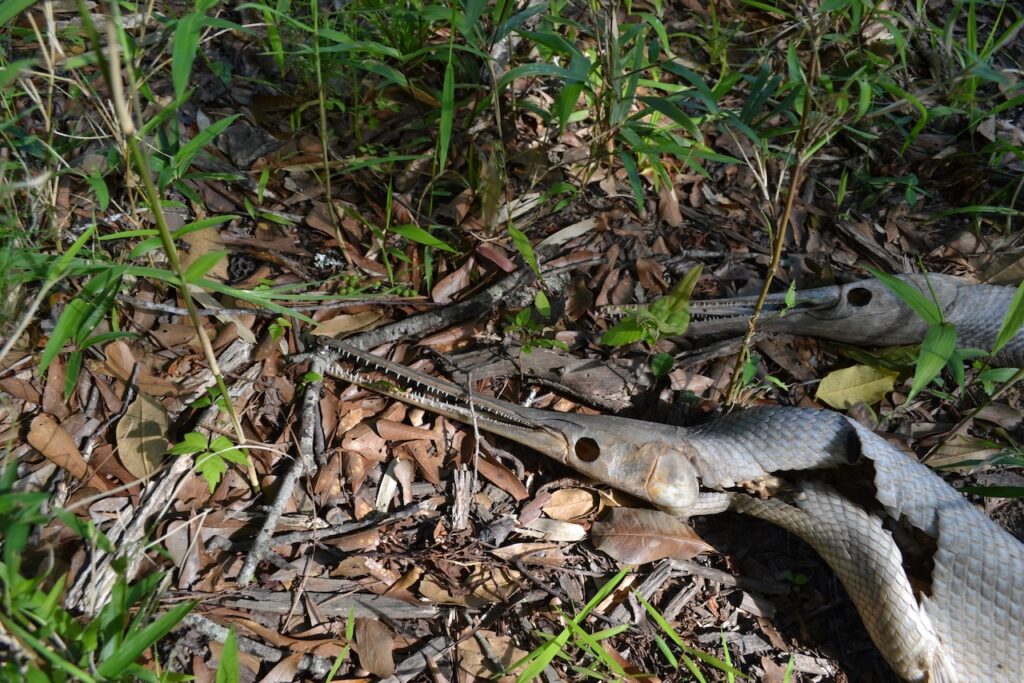
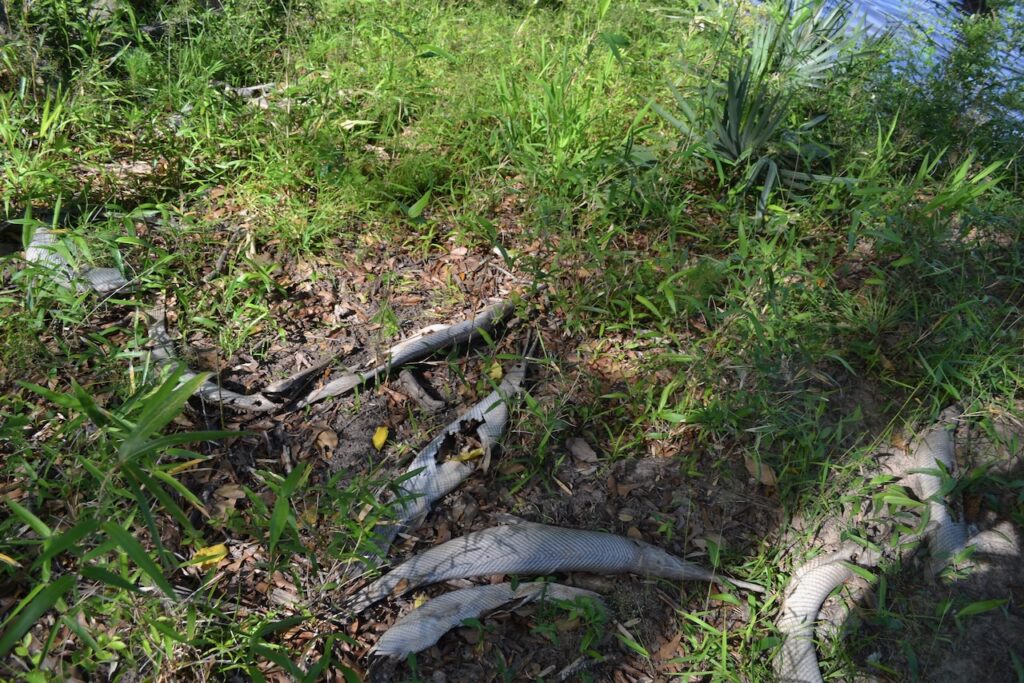
I found more smaller groupings of garfish as I walked to the southwest along the bank. A small creek almost stopped my progress, but the roots of a tree formed a bridge. Further on, I came across a much larger creek that was draining a section of the island. Though there was a downed tree spanning the waterway I decided against the challenge of walking the slippery log.
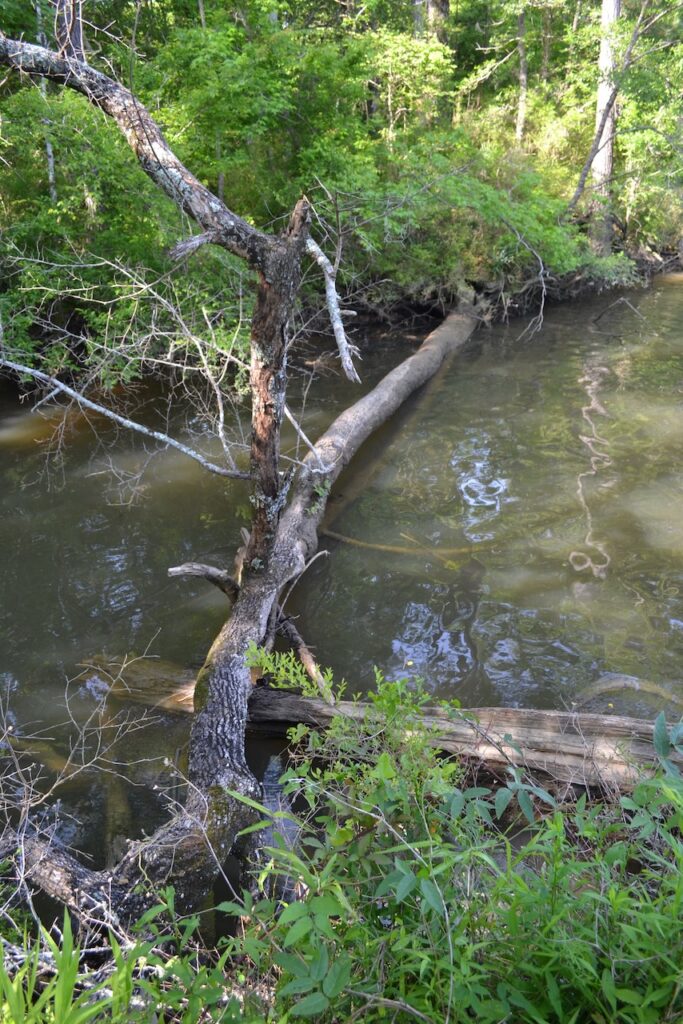
On backtracking I worked to orient myself, and noted several large trees that had been spared by historic timbering of the island. The creek causing the turnaround was not on my map, nor was it on the USGS quadrant map I looked at later. There was a large waterway splitting off from the North Santee River to the northwest, and would learn later that this was Wadmacon Creek, appearing as wide as the river. The North Santee River would transition to the Santee River not far from Commander Island.
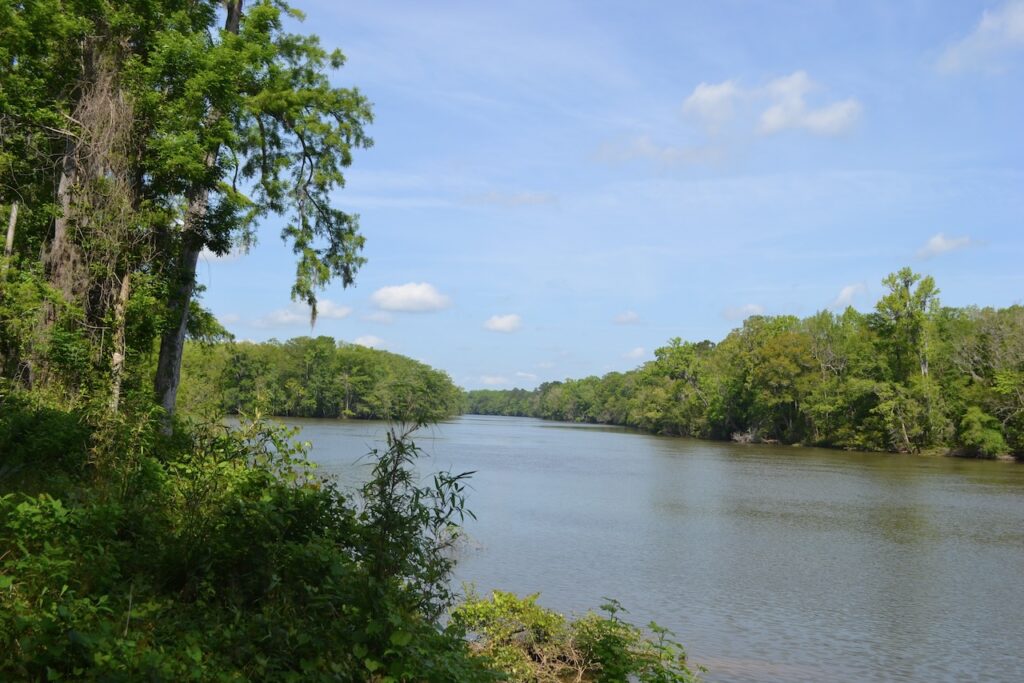
I was back at my starting point, and made a plunge into the island’s interior. I walked through sections of cane, and across dried up ponds. I finally arrived at a pond still holding water, and the mosquito count increased here. I beat a retreat back to the river’s bluff.
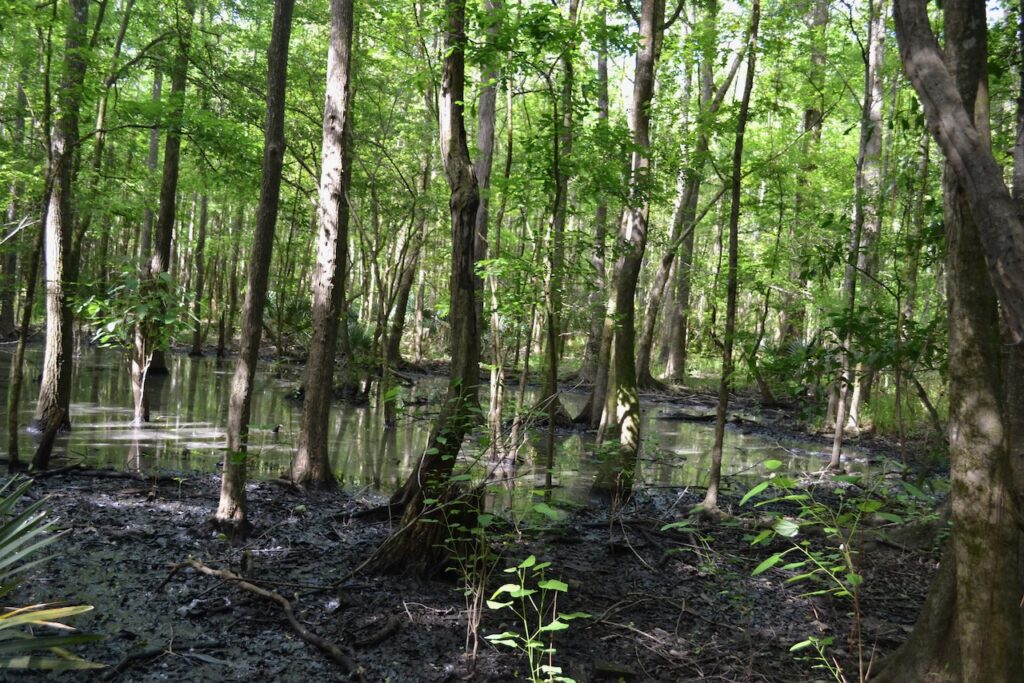
I began to walk to the east, and did not find a reasonable path through the thick undergrowth. I finally forged ahead, and soon found a “plowed” path, ground dug up by feral hogs. I followed this disruption while it lasted, and used a large downed tree to walk above the thick underbrush. The ground opened up for better walking on the bluff, which became higher above the river and steep along the bank. Somewhere I heard a slither, and the plops of snakes dropping off exposed root ends on an overturned tree into the river. I made another foray toward the island’s interior, and found an incongruous structure sitting above another pond. I knew what it was – a child’s playhouse, similar to one I had built for my granddaughter. There was one chair inside, and the structure appeared to be have been used as a blind.
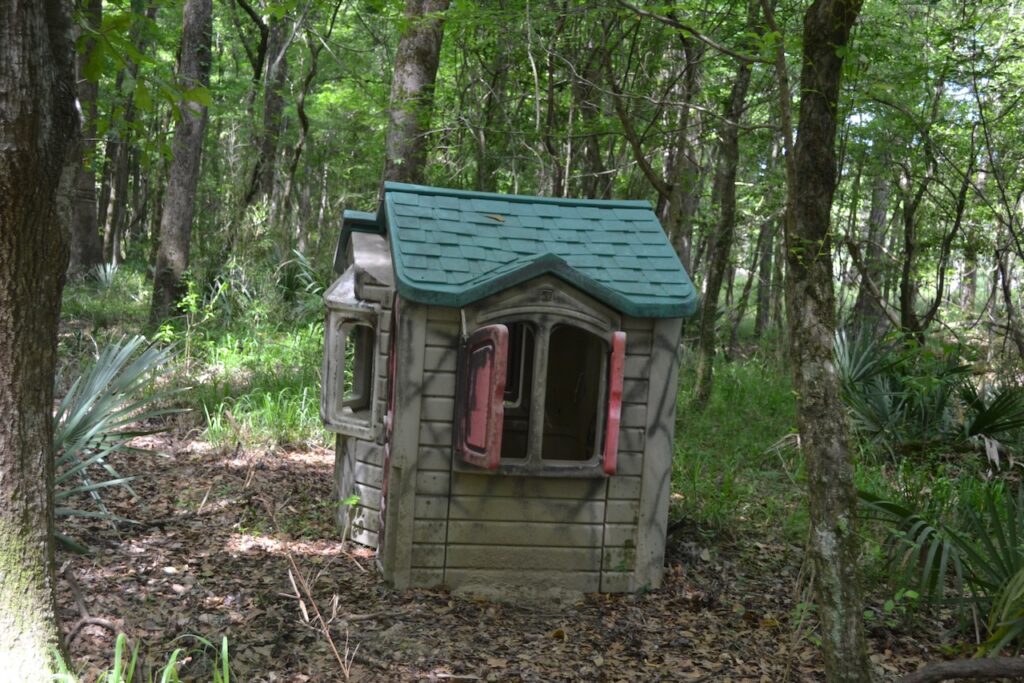
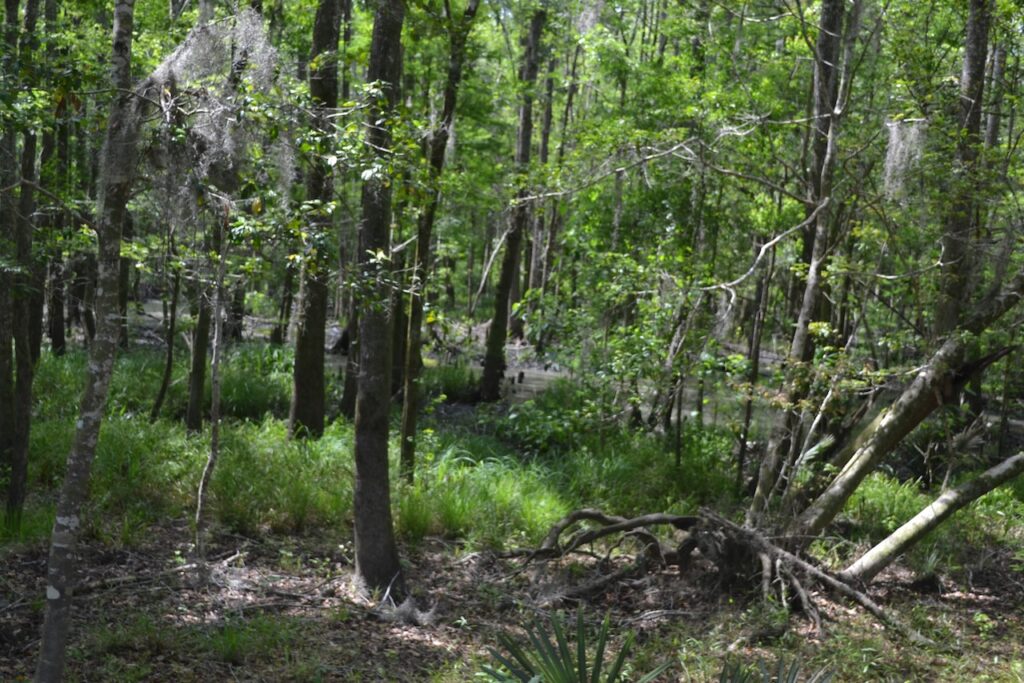
I worked back to my starting point, and heard Matt’s outboard approaching from the east. After reembarking on the boat, I compared notes with his clients about their morning, which included seeing a dozen swallow-tailed kites, and prothonotary warblers. Matt alerted us to a sighting – I was hoping to see a swallow-tailed kite – but it was just another alligator in the river.
Though my island time was brief, I was not disappointed about the experience, and realized I had just scratched the surface in exploring this place. Its future looks bright, with the island to be conveyed to the South Carolina Department of Natural Resources by OSI and TNC. This effort fills in another piece in The Santee Delta puzzle, protecting a spectacular area for the Lowcountry, South Carolina, and beyond. It is not clear how the island will be used or managed. But it should stay a wild place, and accessing it through paddling out Wambaw Creek will be in my future plans.
Quite an adventure 🙂 Glad it was acquired and protected.
A great acquisition, and more value for The Santee Delta.
Bob I bet you couldn’t believe your eyes when you saw the child’s playhouse. I enjoyed the Commander Island visit through your eyes. I believe I’ve been on the Wadmacon fishing.
Have a good evening.
Michelle
It was quite a sight. I approached it carefully…
What an adventure! Can’t wait for the book!
Pam
It has been a wait.
Another good one, Bob. Love the pics too. Hope you are doing well. I wonder when you visited? Seems like a good place to explore very early spring before things get too lively, like skeeters. Also, is this about due north of Hampton Plantation? Take care, Tom Siewicki
The visit was on May 2. We had been in drought, and probably a reason for the low mosquito count. And no May flies, thank goodness.The timing was not a matter of choice, it was go or not. Had to go. And you are quite right, it is due north of Hampton. Glad you are staying oriented.
Great pictures, Bob!! And another great adventure!!!
A mini-adventure, a good one.
Bob, When Leanora and I witnessed Matt dropping you off on that swampy island as you requested, I must admit we were a bit concerned this day might end poorly. Fun to experience you enjoying new challenges to explore and document South Carolina’s secret treasures. These dear islands are precious.
Heh, thanks for that photo of the drop off. It was fun to explore a new island (for me).
Hey Bob,
Great writing once again. It is indeed a beautiful place. I have kayaked along and around Wadmacon on several occasions and have hiked some on both Commander and Wadmacon islands as well. I saw “wild cows” there along with of course, wild hogs. Locals told me about the cows…how they’d go get one when they were ” ready”. So grateful this is in a conversation easement. Looking forward to your next chapter!
I doesn’t surprise me that you have paddled and walked around these islands. Now, a wild cow would have been quite a surprise!